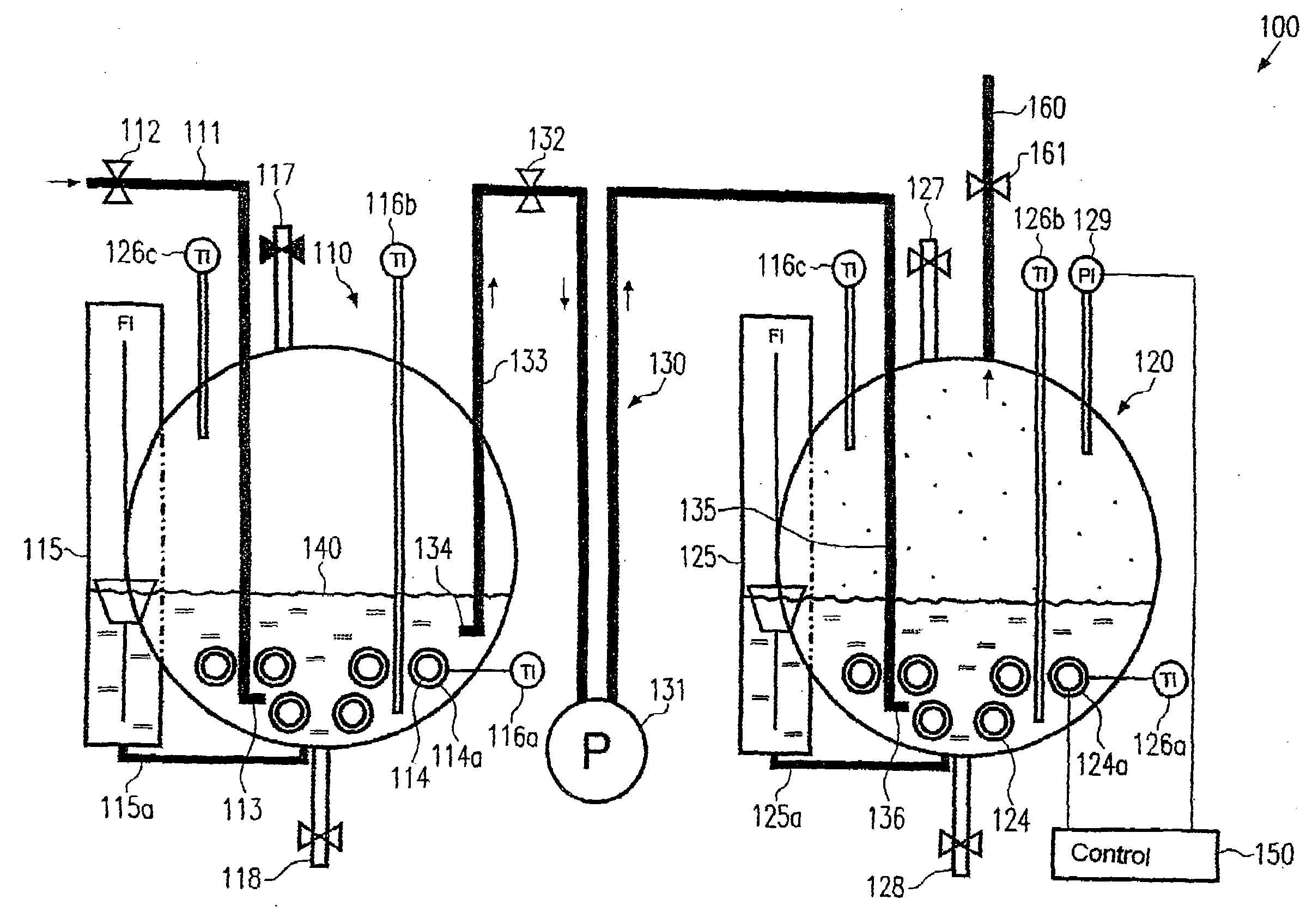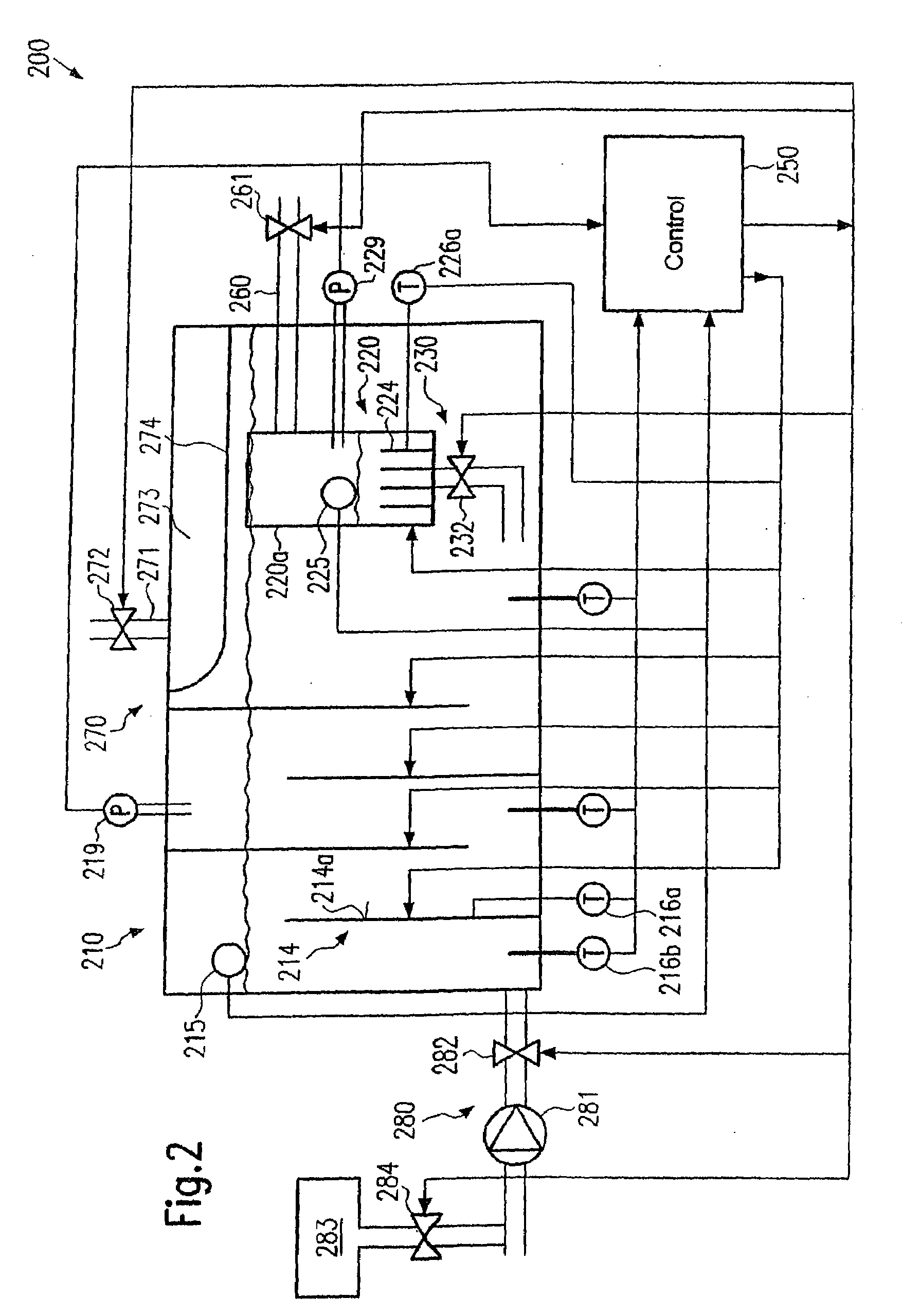Vapor-Operated Soldering System and Vapor Generation System for a Soldering System
a soldering system and vapor generation technology, applied in the field of soldering systems, can solve the problems of large increase in the medium, change in the boiling point, and production of toxic substances
- Summary
- Abstract
- Description
- Claims
- Application Information
AI Technical Summary
Benefits of technology
Problems solved by technology
Method used
Image
Examples
Embodiment Construction
[0056]FIG. 1 is a schematic view showing a vapor generation system 100, wherein a preheating region 110 and a vapor generation region 120 are coupled by means of a fluid connection 130. The preheating region 110 comprises a supply line 111 which comprises a valve 112 at the inlet side and a flow outlet 113 at the outlet side. Preferably, the flow outlet 113 is arranged substantially horizontally in the operative position of the vapor generation system 100 to efficiently effect a convection flow in a liquid contained in the preheating region 110 during operation. The flow outlet 113 is preferably arranged deep below a liquid level 140. For instance, a typical distance of the flow outlet 113 from the liquid level 140 is within the range of several centimeters in a typical operative phase. To guarantee a correspondingly deep position of the flow outlet 113 for many possible liquid levels during operation, the flow outlet 113 may be arranged in the vicinity of the bottom area of the pre...
PUM
| Property | Measurement | Unit |
|---|---|---|
| boiling point | aaaaa | aaaaa |
| boiling point | aaaaa | aaaaa |
| boiling point | aaaaa | aaaaa |
Abstract
Description
Claims
Application Information
 Login to View More
Login to View More - R&D
- Intellectual Property
- Life Sciences
- Materials
- Tech Scout
- Unparalleled Data Quality
- Higher Quality Content
- 60% Fewer Hallucinations
Browse by: Latest US Patents, China's latest patents, Technical Efficacy Thesaurus, Application Domain, Technology Topic, Popular Technical Reports.
© 2025 PatSnap. All rights reserved.Legal|Privacy policy|Modern Slavery Act Transparency Statement|Sitemap|About US| Contact US: help@patsnap.com



